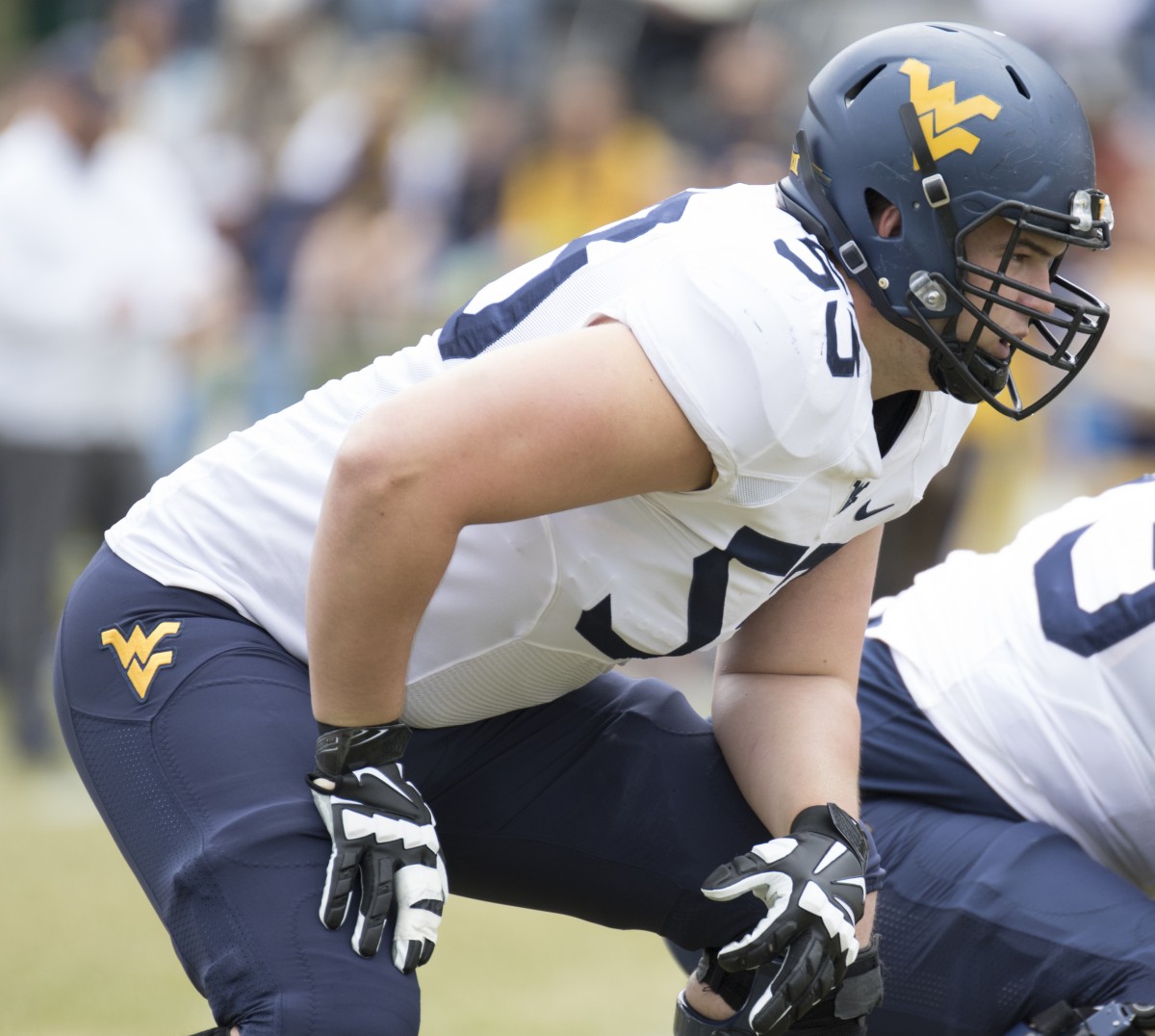MORGANTOWN — West Virginia right tackle Colton McKivitz usually has a smile on his face and a sense of humor when meeting with the media.
With his country twang and camouflage hat featuring a Flying WV, it doesn’t seem like much would get under the skin of the 6-foot-7, 300-pounder — except when you mess with his responsibilities on the football field.
College football rule changes have trickled down to how offensive players are able to block in hopes to eliminate lower legs injuries and make the game safer.
Officially, the new rules state:
No offensive player except offensive linemen can block below the waist unless coming toward the opponent’s front.
No player can block below the waist five or more yards past the line of scrimmage and no player can block below the waist while moving backward toward its own line of scrimmage.
“I was a little upset about the new rule,” McKivitz said. “I’m sure a whole lot of linemen are about the whole downfield cutting thing. It’s definitely a challenge when you’re trying to chase down a cornerback who can run a 4.4 or a 4.5, unlike big linemen like us. It’s a change in our game — play downfield. I think that’s where the rule will make its most impact. That’s where that’ll be felt.”
The move, known more so as a “chop block,” is when a lineman drops down to take out the legs of a defender. The new rule, which will be a 15-yard penalty if broken, will likely cause linemen to eliminate chop blocks all-together. With the way the rule is written now, linemen can still use it during initial block attempts at the snap.
McKivitz wants to keep an optimistic approach to the new rule, believing, “If you’re doing your thing and getting your guy and blocking them, then there shouldn’t be any reason to get a chop block.”
But remembering in the heat of the moment that downfield chop blocks are no longer legal is something that will take a little while to get used to.
“I had one against Kansas last year because I beat the guy to the spot, but I thought I would just cut him. I won’t be able to do that now,” he said. “It’s a new rule, but I think it’s just something to worry about.”
While he doesn’t necessarily like it, McKivitz knows the intent is to make the game safer.
“But it’ll keep up with player safety, and that’s a big emphasis for what that rule is made for — keep guys healthy instead of blocking low on guys,” he said.
Head coach Dana Holgorsen thinks the new rule is another step in eventually eliminating chop blocks all-together, but in the meantime, he wants the coaching staff to teach what is legal and what’s not since there is a fine line between the two and the officials are going to be looking that way.
“In my eight years here, I think six of the years we’ve talked about blocking below the waist in our head coach meetings, and every year, I leave more confused on what is legal and what is not legal,” he said. “We showed them a lot of examples, and the tricky part is that we don’t practice it. We don’t practice cut blocking against our own people. It’s hard to practice it, but we have to educate them. Once again, it’s up to each one of the position coaches to communicate to the players that this is an acceptable cut block and this is not an acceptable cut block.
“They have to understand what is acceptable and what is not because they’re going to look very, very closely on cut blocks, and you’re going to see more flags on chop blocks this year.”
Follow Sean Manning on Twitter @SeanManning_DP. Email: smanning@dominionpost.com.




